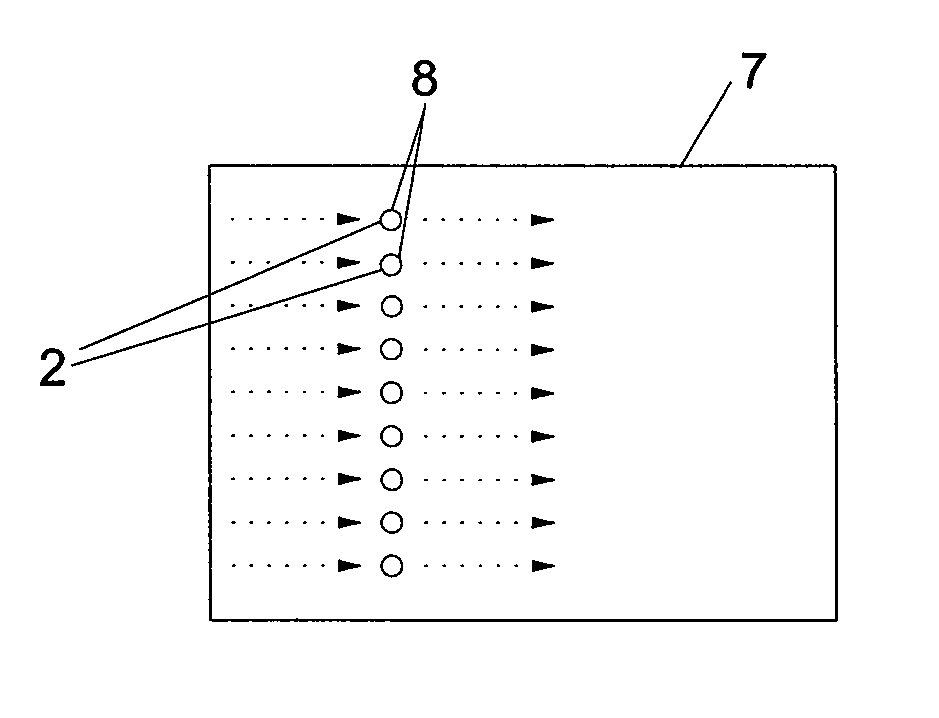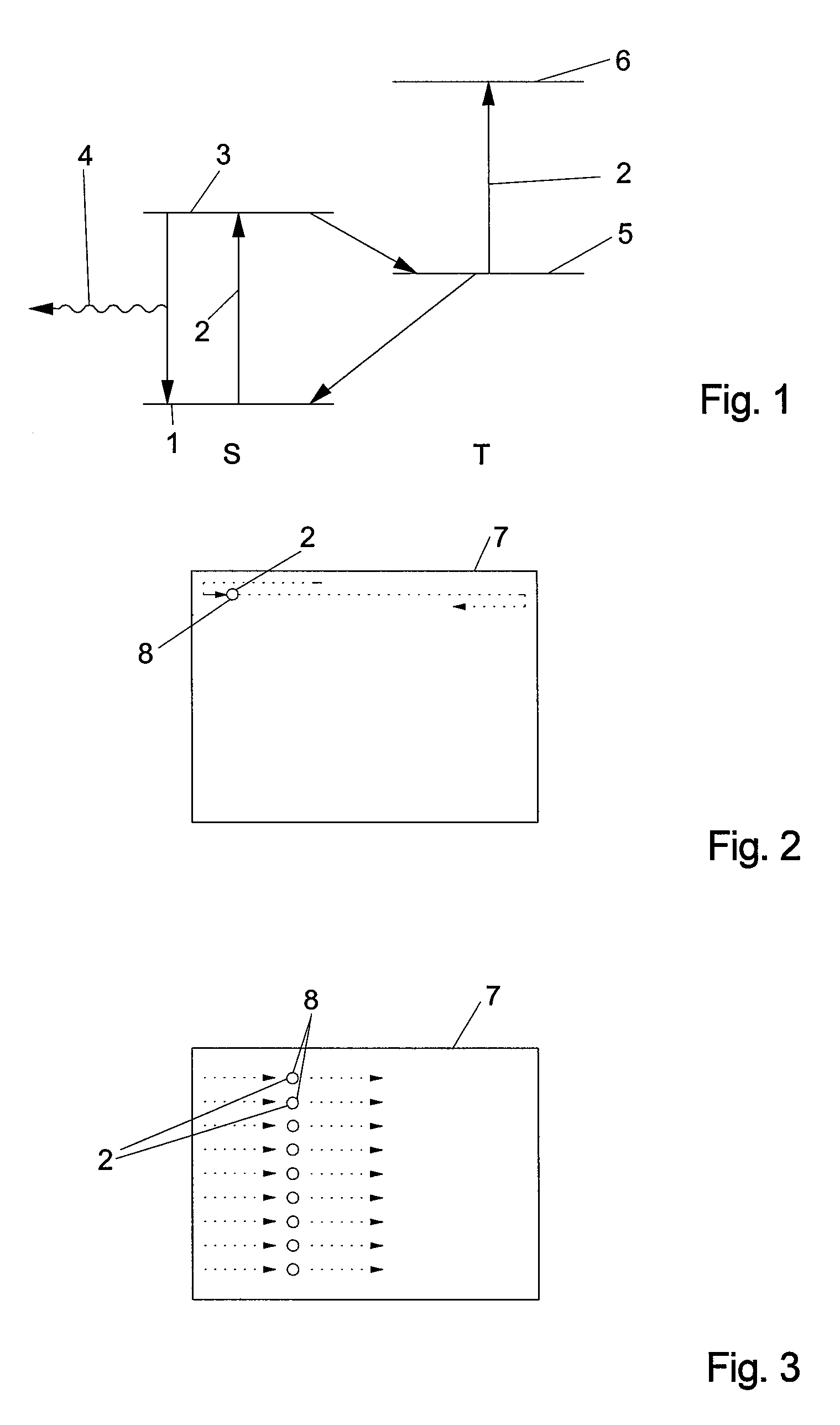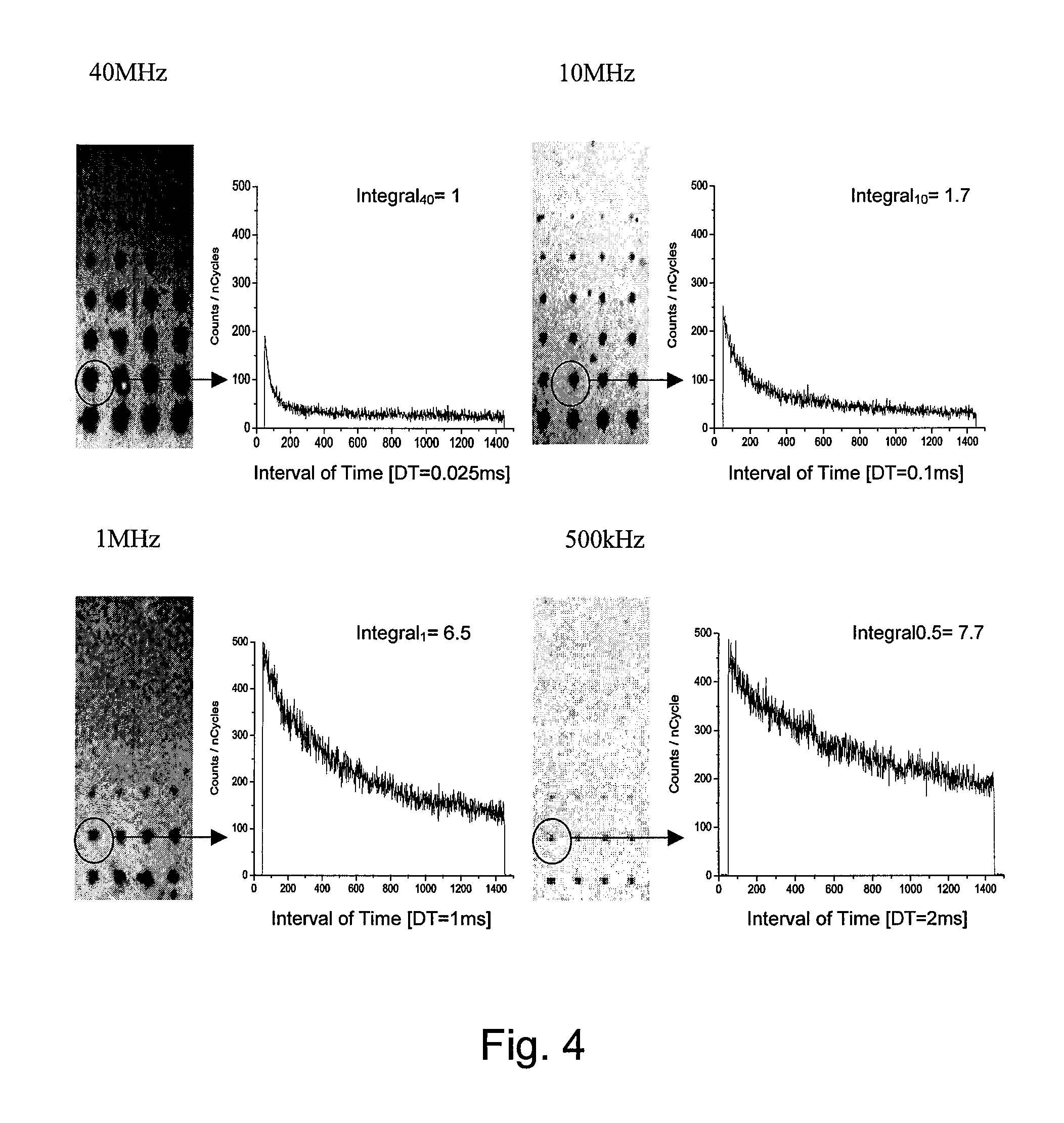Method and device for optically measuring a sample
a sample and optical measurement technology, applied in the field of optically measuring samples, can solve the problem of not being able to arbitrarily extend the repetition interval, and achieve the effect of increasing the repetition interval in time, weakening the signal-to-noise ratio, and increasing the repetition interval
- Summary
- Abstract
- Description
- Claims
- Application Information
AI Technical Summary
Benefits of technology
Problems solved by technology
Method used
Image
Examples
Embodiment Construction
[0045]Referring now in greater detail to the drawings, FIG. 1 schematically illustrates electronic states of a fluorescence dye or fluorophore. These electronic states include a ground state 1 which corresponds to the lowest energy of the fluorescence dye in its singulett state S and at all. By means of an electromagnetic signal 2, the fluorescence dye can be transferred into an excited state 3, which also belongs to the singulett state S of the fluorescence dye and which may be the fluorescent state of the fluorescence dye of interest here, out of which it can return into the ground state 1 under emission of registerable fluorescence light 4. Further, there is a certain probability, that the fluorescence dye gets into a third state 5 due to the electromagnetic signal 2, which is the state with the lowest energy within the triplet state T of the fluorescence dye here. It is indicated in FIG. 1, that the fluorescence dye gets into the state 5 out of the state 3. It is also possible, ...
PUM
| Property | Measurement | Unit |
|---|---|---|
| time | aaaaa | aaaaa |
| time | aaaaa | aaaaa |
| repetition frequency | aaaaa | aaaaa |
Abstract
Description
Claims
Application Information
 Login to View More
Login to View More - R&D
- Intellectual Property
- Life Sciences
- Materials
- Tech Scout
- Unparalleled Data Quality
- Higher Quality Content
- 60% Fewer Hallucinations
Browse by: Latest US Patents, China's latest patents, Technical Efficacy Thesaurus, Application Domain, Technology Topic, Popular Technical Reports.
© 2025 PatSnap. All rights reserved.Legal|Privacy policy|Modern Slavery Act Transparency Statement|Sitemap|About US| Contact US: help@patsnap.com



